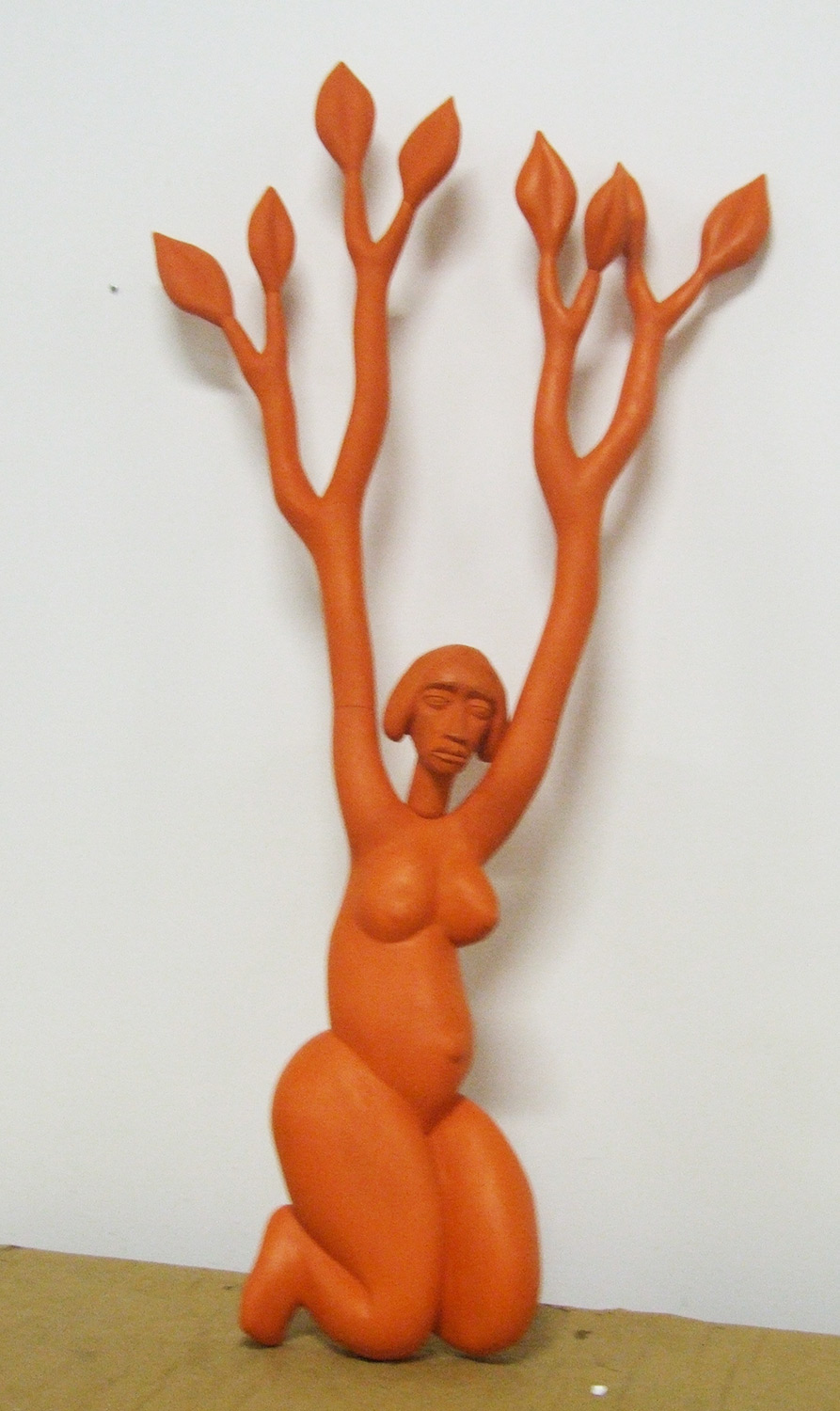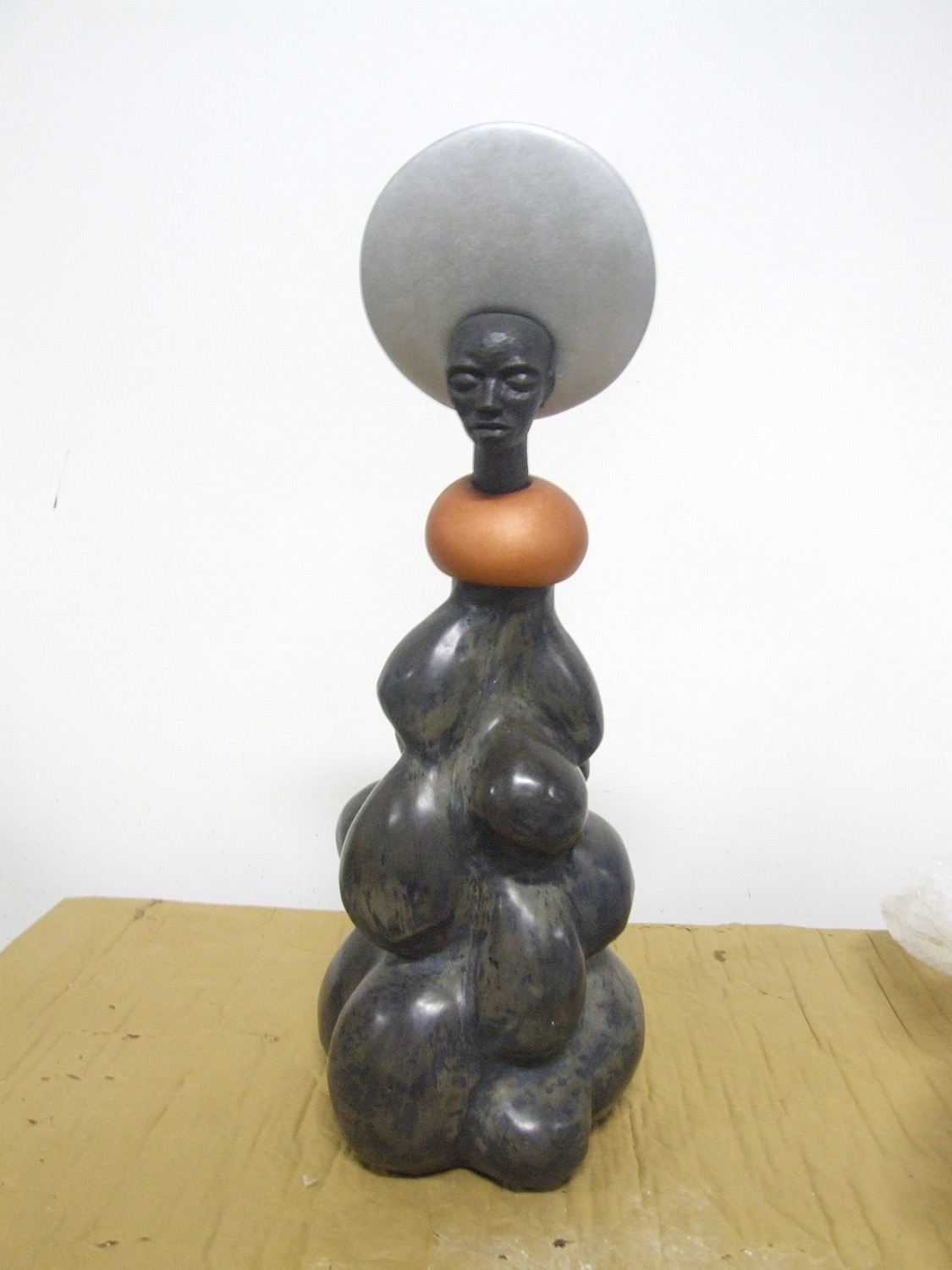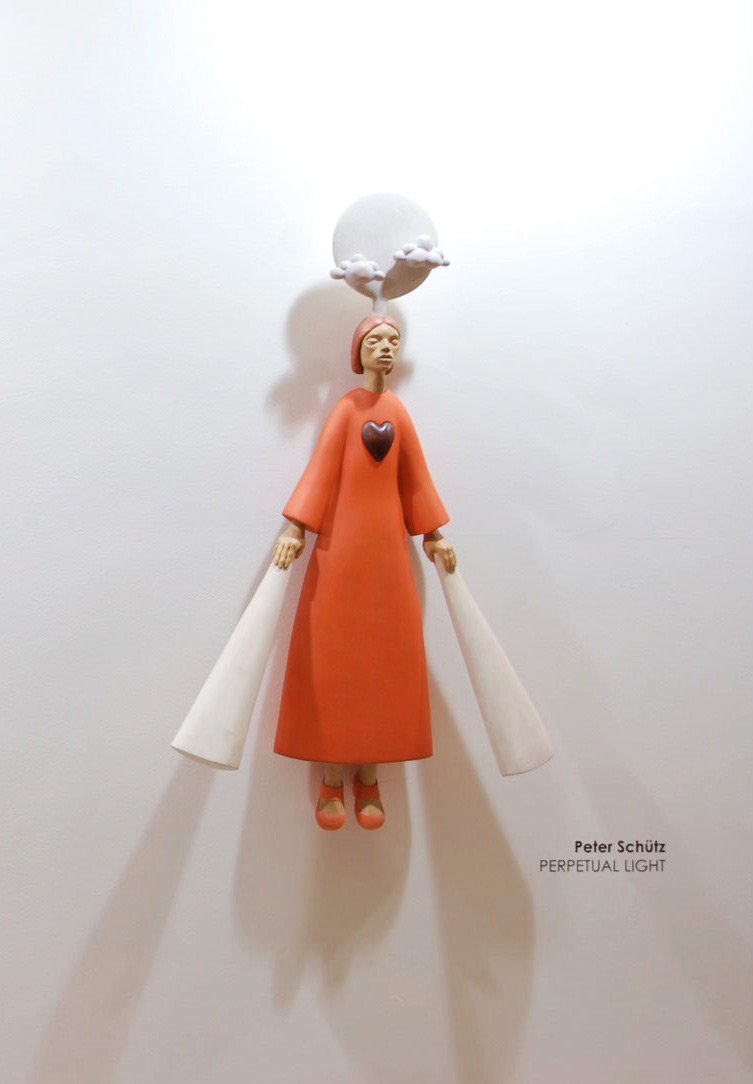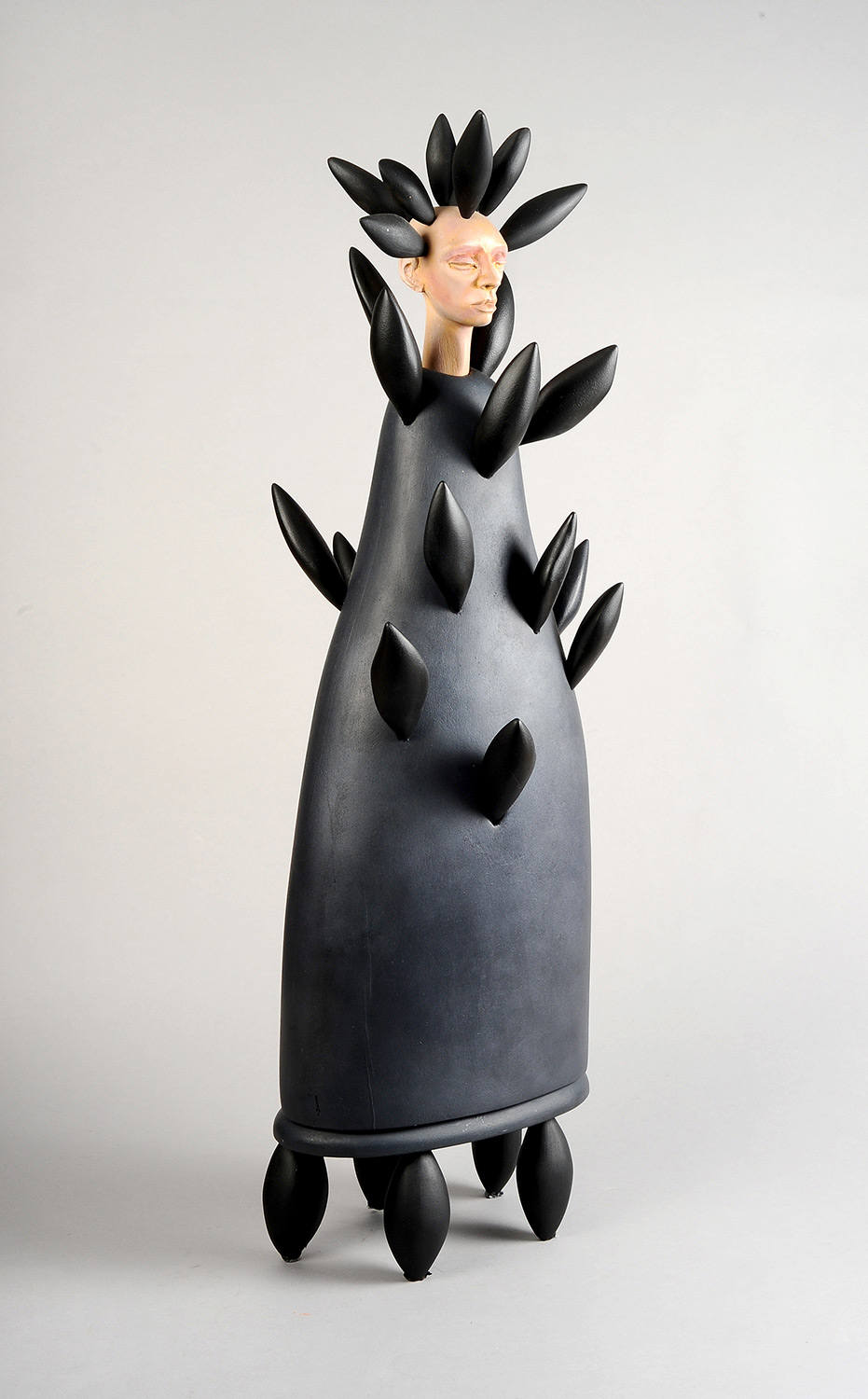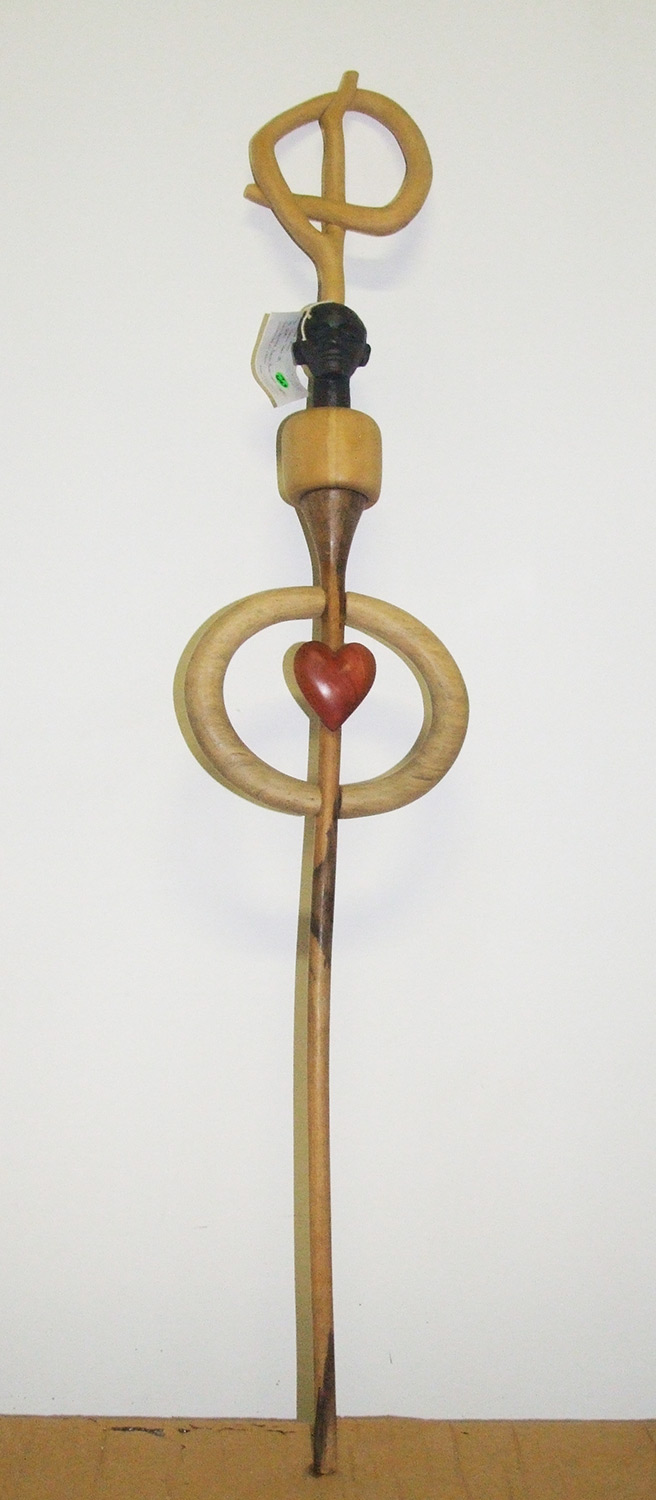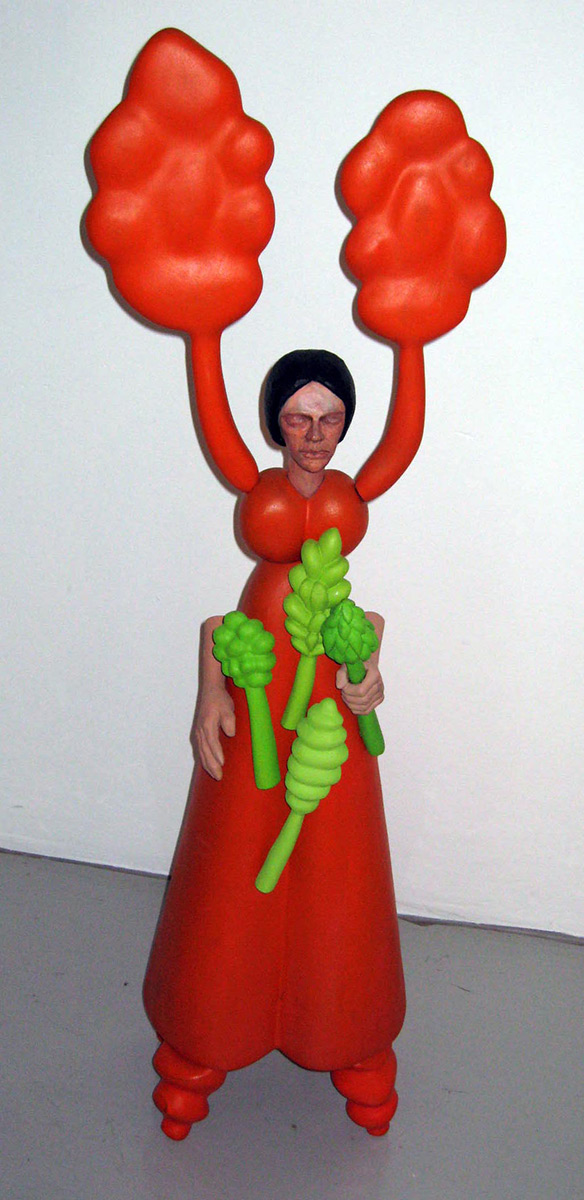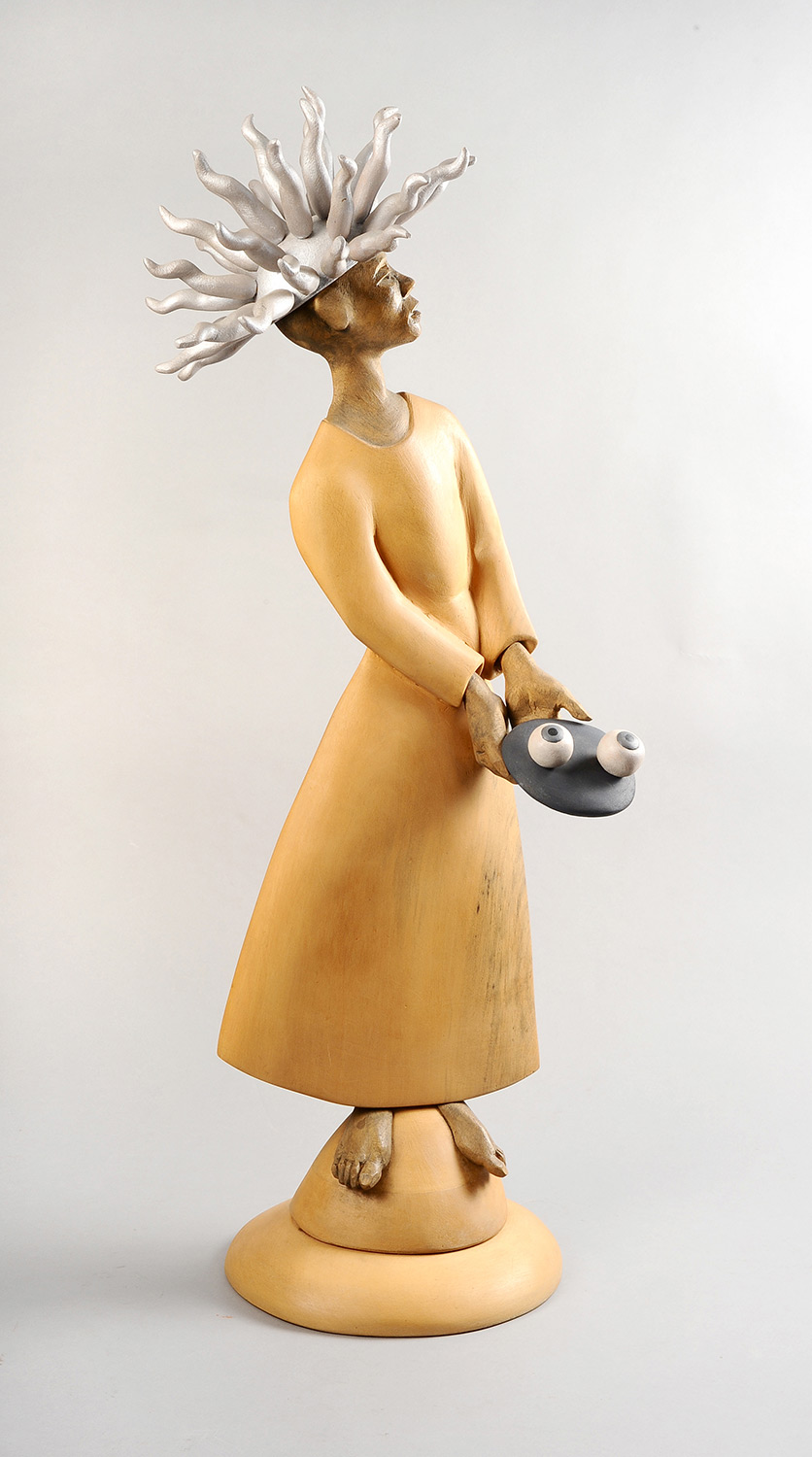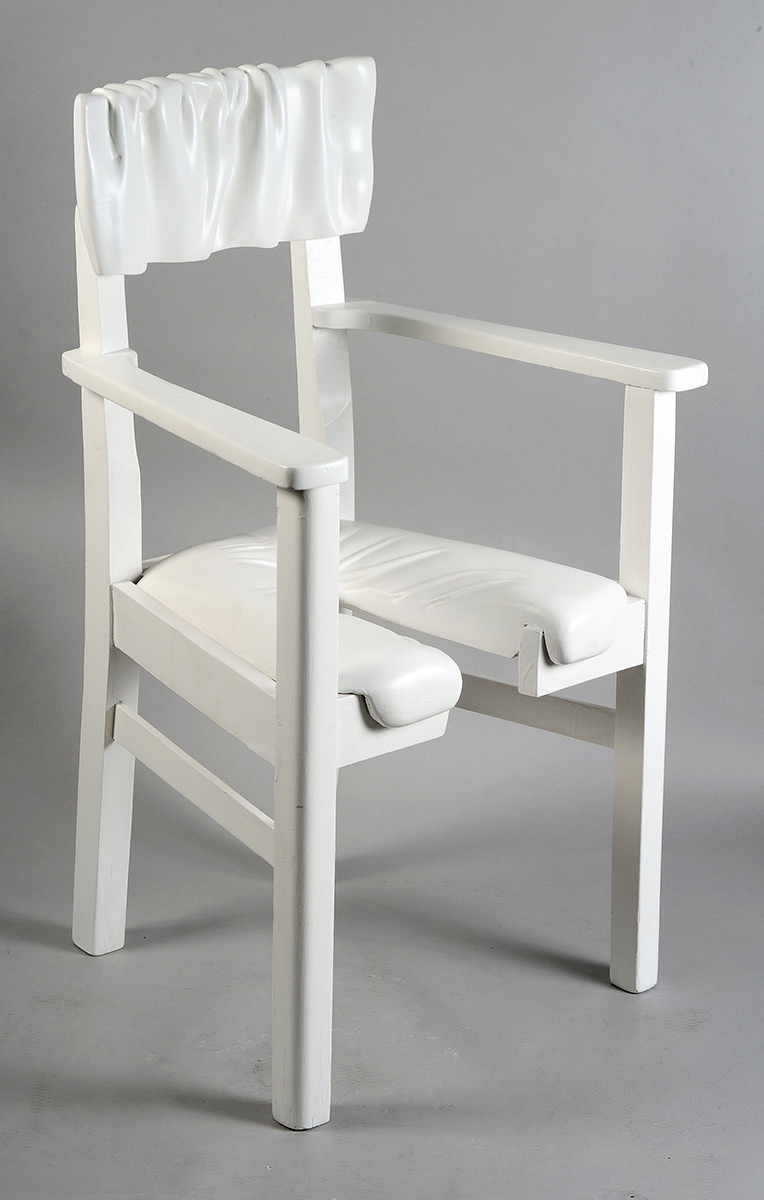Peter SCHÜTZ (1942 – 2008)
BIOGRAPHY
Peter Schütz was born in Glogau, Germany, and immigrated with his family to South Africa in the 1950s. He completed his initial training at the Natal Technikon (now the Durban University of Technology), before graduating with an MFA from the University of Natal (now the University of KwaZulu-Natal).
In addition to his artistic practice, Schütz devoted much of his life to teaching. He taught both at the Natal Technikon and at the University of the Witwatersrand, where he lectured for almost 20 years.
Schütz’s oeuvre is comprised primarily of sculptural works. His preferred medium was jelutong, a soft, light-coloured Indonesian wood. A master woodworker, his sculptures are meticulously carved and sanded, typically painted in boldly coloured oils. His respect for physical work was an important aspect of his life.
He also produced several print editions, often in collaboration with the Caversham Press.
His subject matter is broad, ranging from religious iconography to domestic scenes and landscapes—depicting figures and objects from the sacred to the everyday. A common thread knitting these together is the artist’s wit and wisdom, as well as his commitment to creating works of art that are uniquely African.
He tackled many important issues—such as environmental degradation, the loss of nature in cities, the destruction of animal life— always with an eye for form, colour and beautiful craftsmanship. ‘Ritual, in all its pomp, ceremony and sensuality, was always a part of his interest, and his attraction to Mariannhill Monastery, near his Durban studio, where his memorial service was held, was no doubt evidence of this,’ writes Carol Brown. Schütz maintained fully equipped sculpture studios at Wits and in KwaZulu-Natal up to the last three months of his life.
In 1984, Schütz was selected as the winner of the prestigious Standard Bank Young Artist Award, and in 1988, he was the recipient of a Cape Town Triennial Gold Medal. He also represented South Africa in Chile and in Morocco at official presentations.
In 1999, he was commissioned by the Durban Art Gallery to create Durban Icon, a two-metre-high work in wood, one of the his seminal works.
In 2015, the Wits Art Museum hosted An Eye on the World, a survey exhibition of his career.
Schütz’s idiosyncratic works are held in a number of important collections including the SABC Art Collection, the Johannesburg Art Gallery and the Chase Manhattan Bank collection, New York.


